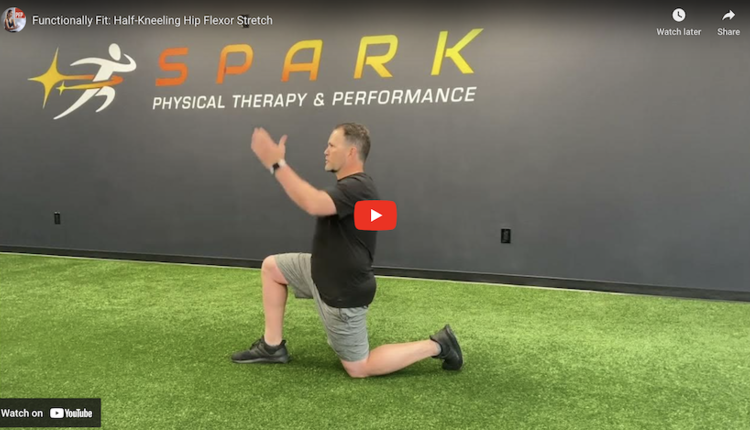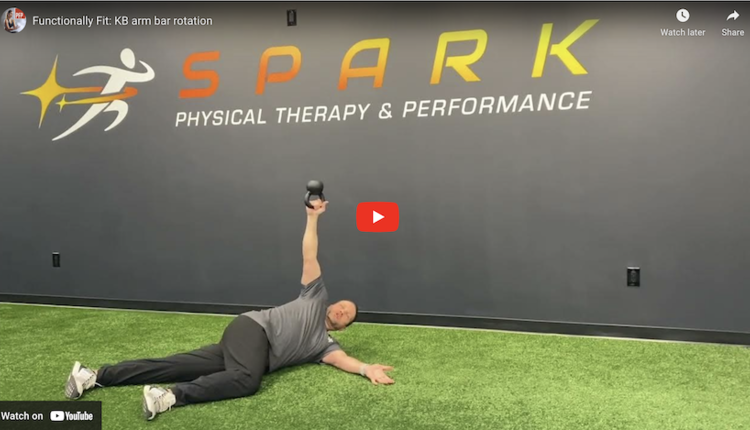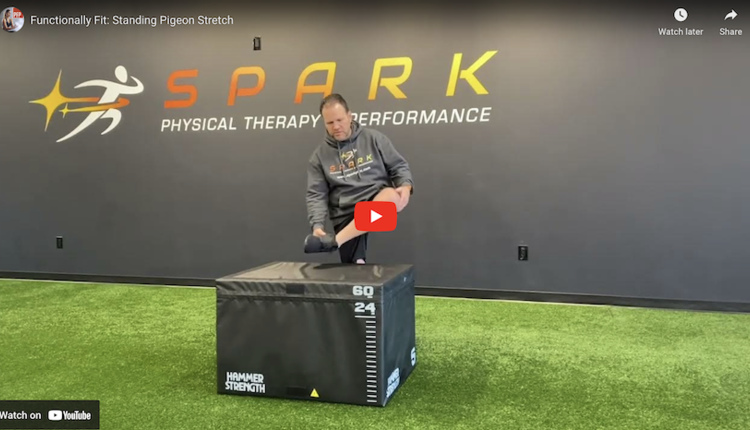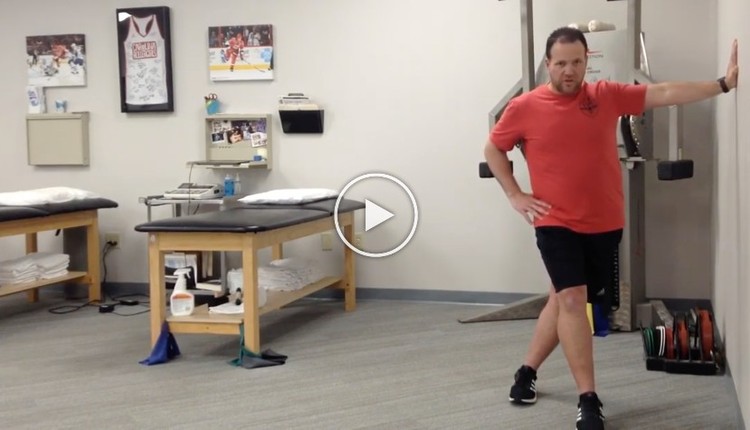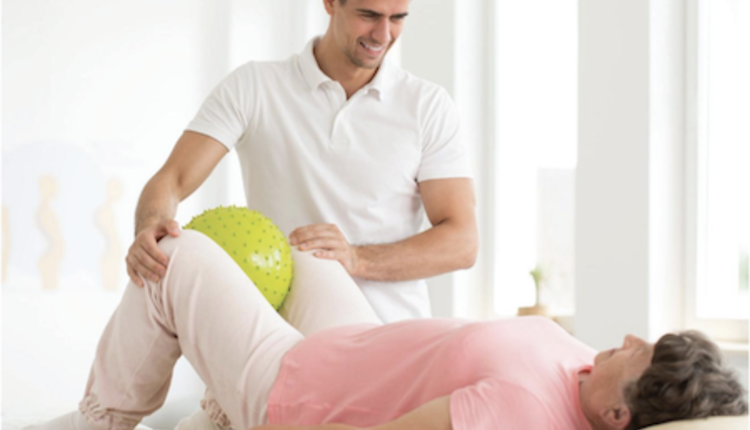![E-News-Column_2[1] E-News-Column_2[1]](https://cms-static.wehaacdn.com/fit--pro-com/images/E-News-Column_2-1-.2517.0.0.jpg)
In the latest edition of Functionally Fit, Brian adds tubing to add support and increase continuity of the Hip Flexor Stretch. This exercise is good for relieving hip and abdominal tightness, both contributors to spine problems.
See 'Related Resources' below for past Functionally Fits and other exercises and training tips.
Execution:
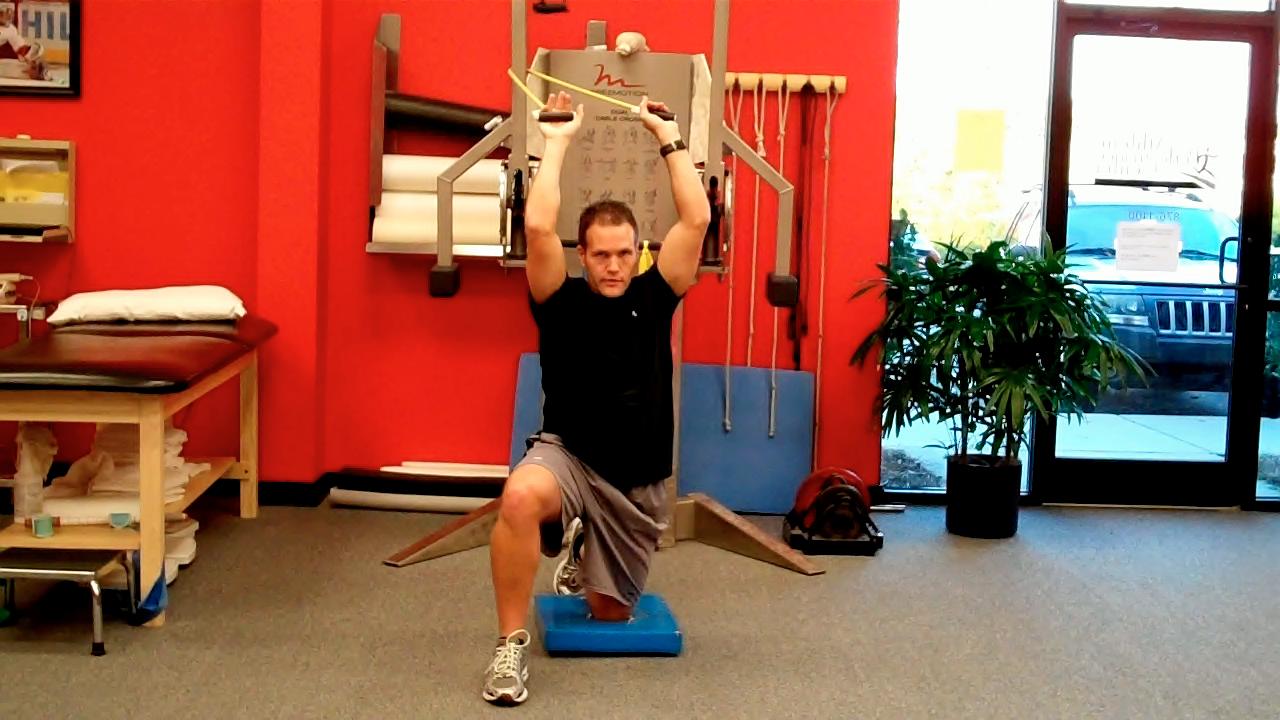
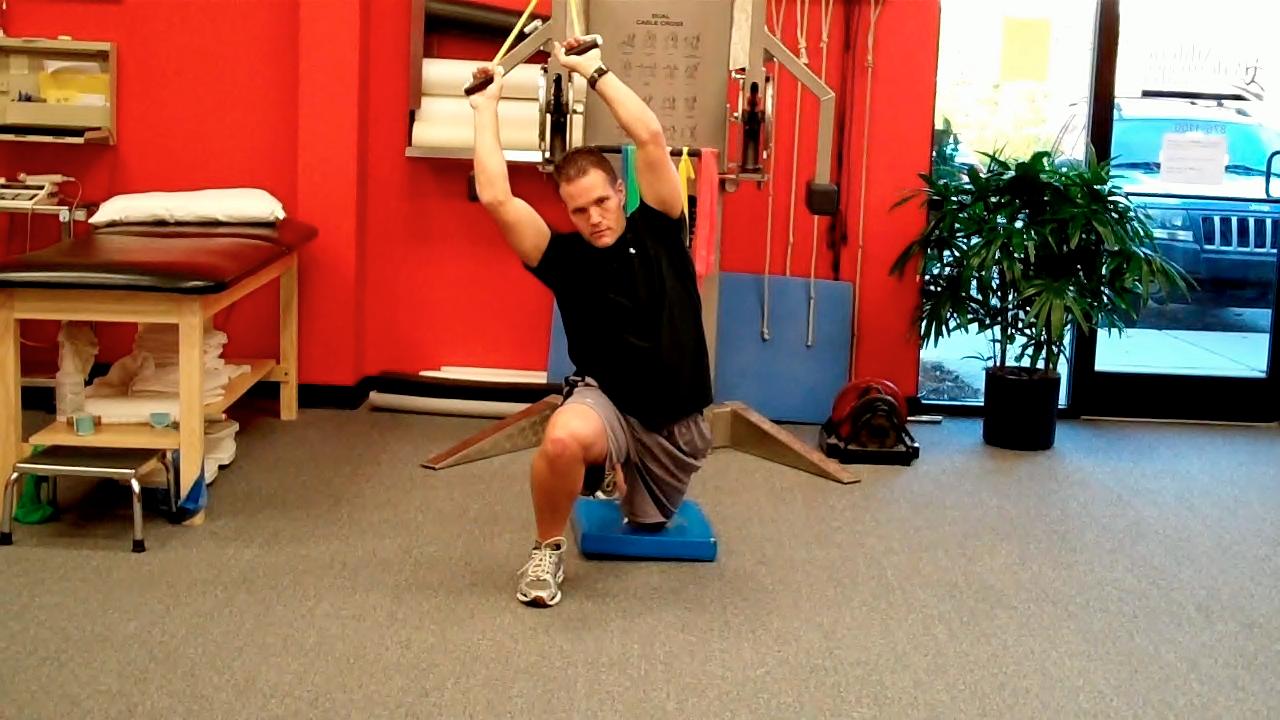
Place tubing around a stationary rack or immovable object sothat the handles are even. The tubinganchor point should be well above the head of the client. Next, kneel down on one knee and positionthe other leg forward in a traditional hip flexor stretch position.
Now, grasp the handles of the tubing and slowly shift thebody weight forward over the upright knee while simultaneously allowing thearms to move away from and diagonally opposite the hip of the kneeling leg.
Once a comfortable stretch is attained, hold for 20-30seconds. Repeat twice and then switchsides. If kneeling is uncomfortable, thestretch can also be done in standing, but you would need a much taller anchorpoint for the tubing. You may also optnot to rotate the upper body as much if it proves uncomfortable.
Application:
While this stretch is not new, I do like using the tubing to assist the pull and achieve a smoother continuous stretch as the upper body is more supported. You can also move further away from the anchor point to accentuate the stretch as desired.
In general, most clients have hip flexor tightness given the amount of sitting and computer work done today. In addition, this stretch will also help elongate the abdominals, which are often tight and weak. Excessive hip flexor and/or abdominal tightness can pull the pelvis anteriorly and contribute to lumbar spine problems.
Some general precautions include clients with active lumbar disc pathology, spinal stenosis, spondylolisthesis, facet joint pain, stress fractures of the lumbar spine, gross shoulder instability, or active shoulder impingement. While these conditions may not preclude you from using the exercise, their presence may require special attention or modification based on each client.
Be sure to closely monitor form and ask for client feedback with respect to where the stretch is felt and if any discomfort in the spine or shoulders is occurring. Clients with knee arthritis or patello-femoral pain will do better in the standing position.
Brian Schiff, PT, CSCS (www.brianschiff.com) is a licensed physical therapist,respected author and fitness professional. He became a Certified Strength and ConditioningSpecialist (CSCS) in 1998. Currently, he serves as the supervisor at theAthletic Performance Center in Raleigh, NC. Brian presents nationally atseveral professional conferences and seminars on injury prevention, rehab andsport-specific training.



